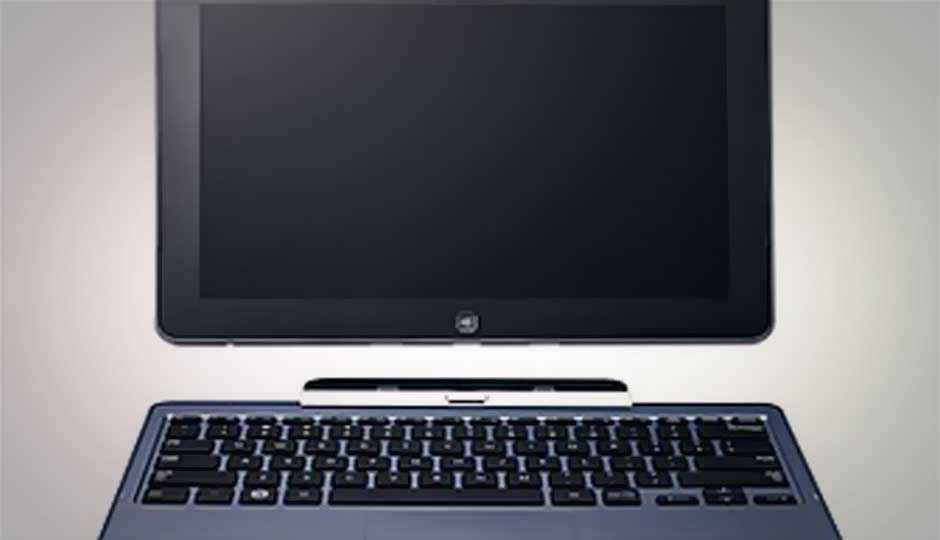Windows 8 hybrid laptops face growing pains

The laptop as you know it is about to change dramatically. The line between laptop and tablet is becoming blurred, and within the next few weeks the PC aisle at your local tech store will be filled with hybrid laptops, equipped with touch screens that flip, fold, and function as either a laptop or tablet. Prodded by this week's launch of Windows 8, every major laptop manufacturer has some take on the laptop/tablet chimera, ranging from the familiar twisting screens seen on tablet PCs for years to bizarre folders, sliders, and more.
People may have misgivings about Windows 8, but the operating system is usable after a bit of adjustment, and future updates will likely iron out any major problems that are found in the new OS. What can't be fixed with an update, however, is the hardware on which it's running. Without naming makes and models—mostly because these criticisms apply to all—the first wave of hybrids are examples of questionable design and poor construction converging in many variations of one untried form factor.
These hybrid laptops generally fall into two broad categories: convertibles, which function as laptop and tablet, but remain a single device; and detachables, which feature a standalone tablet as the screen, with the keyboard connecting via specialized dock. Within these categories are multiple variations, and we'll likely see more in coming months.
Anyone watching the tech industry for the last three years has seen the inexorable march of touch-enabled devices—smartphones and tablets—on a collision course with the relatively unchanged PC. Tablets make much more sense from an ergonomic standpoint than reaching across a desk or keyboard to touch the traditional display. But where new hybrid designs may eventually have grown organically from the already strong trend toward touch interfaces, Windows 8 created a deadline to be met—and now it's a problem that needs to be solved, fast.
While manufacturers are putting out these hybrid laptops, they're doing so largely because the release of Windows 8 has pushed them to it. The touch-centric nature of Windows 8 demands the inclusion of a touch interface, which in turn demands a rethinking of the laptop design. The new hybrid designs represent a major change in personal computing, but it's a change into which the industry was forced. Manufacturers without touch-enabled laptops ready to launch this week will rightly be considered behind the times. But meeting an arbitrary deadline doesn't magically mature a young technology. In the world of Windows, touch is decidedly young, whereas and in consumer's eyes, it's a brand-new baby.
What makes a successful hybrid? Nobody knows. Not yet, anyway, because no manufacturer has had widespread success with the form factor and there's never been this sort of a push behind tablet PCs before. But we do know what doesn't work, because the history of the PC is littered with failed and forgotten devices that pushed form over function, or tried to cash in on gimmicky features.
The state of technology is always in flux, but this current situation is more of a corner into which PC manufacturers have been forced. Here are three things for manufacturers to keep in mind to make these new hybrid laptop designs successful:
Simplicity is golden
The transition to Windows 8 will be big enough; don't frustrate users with complicated latches and mechanisms. Shifting from laptop to tablet and back again needs to be seamless, straightforward, and simple. Most of the hybrid laptops we've seen coming down the pike are none of those things.
Quality design is essential
Some manufacturers treat laptop design as an afterthought, a pretty (or just passable) veneer over the guts of a system. But design has become ever more important as PCs become commoditized, and hybrid designs ramp up this importance exponentially. Unlike a laptop, which merely needs to look good, these new systems are also tablets—devices to be handled, carried, cradled. Shoddy design is evident immediately. And this isn't just about the look and feel of the laptop either; it also has to be durable. The new hybrids will be used more often, in more places, than laptops. With the mechanics of transitioning between laptop and tablet modes, you've got a new point of failure added to the basic laptop design, and most of the designs we've seen feel cheap and fragile.
Gimmicks alone aren't enough
Companies have been making ham-fisted attempts to appeal to geeky gadget lust for a long time, but for hybrids to really take hold, there needs to be solid value beyond the bells and whistles. Let me state this plainly: Touch functionality cannot be treated as a gimmick. There needs to be a polished, cohesive user experience that makes Windows 8 and touch-centric computing work on a daily basis. This isn't a challenge merely for laptop makers—the software side has a lot of weight to carry as well—but frivolous design decisions won't help this new computing paradigm get off the ground.
The bottom line is that these hybrid laptops don't merely need to be on par with existing laptops and tablets; they need to be better. For this new category to really gain traction, the combination of laptop, tablet, and touch device needs to be executed in such a way that consumers see the potential of it, and have an afford
Already familiar with Windows 8? Get yourself a chance to win guaranteed and exciting prizes.
Copyright © 2010 Ziff Davis Publishing Holdings Inc




